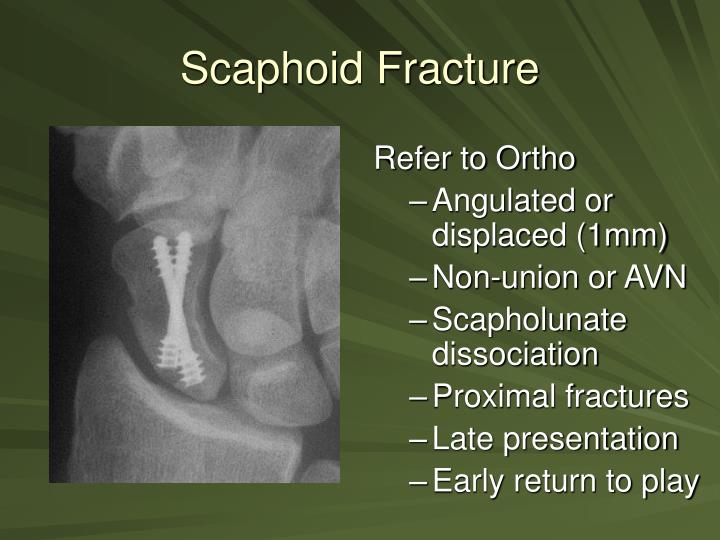

In fact, there is only one early paper addressing this particular age group. There is a paucity of data in the literature on fractures in children up to the age of 10 years despite the increasing incidence and increased use of advanced imaging modalities to diagnose those injuries. Patterns of scaphoid fractures in children vary from those found in adults. Since the last decade the incidence of scaphoid fractures in the pediatric population is increasing.Īctive participation of children in competitive sports is considered the cause for the increased incidence of sports-related hand and wrist injuries,Īlthough improved awareness and imaging may contribute to the increase detection of these injuries.

With a peak frequency between the ages of 12 and 15 years, they are a rarely found under the age of 10 years. Surgical management of scaphoid fractures might be required in very selected cases.Ĭarpal fractures are uncommon in the pediatric population, of which the scaphoid is the most common carpal bone involved. Nonoperative management of most scaphoid fractures in this age group is safe and feasible with no significant long-term morbidity. MRI is most often needed to confirm diagnosis. Scaphoid fractures are rare in the pediatric population up to the age of 10. A majority of patients had minor symptoms after the fracture, most likely due to the immobilization time. The average time of immobilization was 6.6 weeks (range: 4–10 weeks).

All patients were managed nonoperatively. Five patients had associated fractures of the capitate and one patient had associated second metacarpal base fracture. Scaphoid waist was the most common location. The mean age was 9.8 years, with female preponderance. Final diagnosis in all these patients was done with magnetic resonance imaging (MRI). The secondary aim was to review the literature due to the limited knowledge about these fractures in these low age groups.Ī total of 23 patients with documented scaphoid fractures in children up to the age of 10 years were found. Parameters studied were patient demographics, clinical presentation, mechanism of injury, investigations, type of fracture, associated injuries, treatment offered, outcomes and complications. All cases in children up to the age of 10 years, treated in a tertiary pediatric hand and upper limb from January 2014 to June 2018 were included. The primary aim of this study was to analyze prospectively collected data in managing scaphoid fractures. This makes the diagnoses challenging in this age group. Scaphoid fractures are relatively uncommon in children, especially below the age of 10 due to the ossification of the scaphoid bone, which starts around 4 to 6 years of age and continues until 13 to 15 years of age, where pediatric scaphoid fractures peak.


 0 kommentar(er)
0 kommentar(er)
